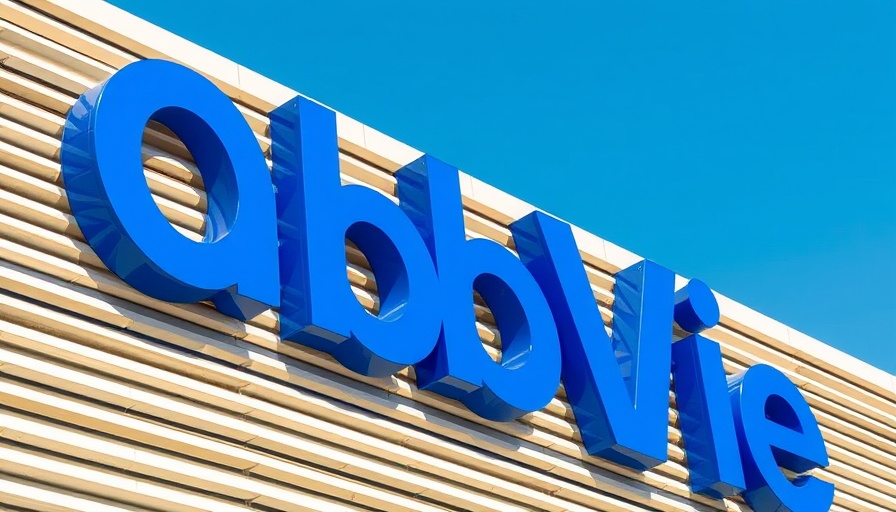
Investing in American Manufacturing: AbbVie's Bold New Step
In a significant move that underscores a trend toward reshoring and domestic manufacturing, AbbVie has announced plans to build an active pharmaceutical ingredient (API) manufacturing facility in North Chicago, Illinois. With an investment of $195 million, the new facility aims to bolster the production capacity of current and future treatments across various sectors including neuroscience, immunology, and oncology. AbbVie's decision reflects a broader commitment of over $10 billion aimed at strengthening its U.S. operations over the next ten years.
Strategic Timing: Responding to Tariff Threats
The timing of this announcement is particularly telling, especially in light of ongoing trade discussions and the prospect of tariffs on pharmaceutical imports. As President Trump has threatened tariffs as high as 250%, drug manufacturers are increasingly compelled to invest in U.S.-based production to mitigate cost impacts. This strategic pivot is not just a response to rising tariffs but also a proactive measure to ensure supply chain resilience.
Comparative Financial Commitments in the Pharma Sector
While AbbVie's investment is substantial, it doesn’t match the scale of commitments made by its competitors. For instance, Johnson & Johnson has pledged $55 billion over four years, while AstraZeneca has made a $50 billion commitment toward U.S. manufacturing and research by 2030. Other companies like Eli Lilly have recently escalated their investment pledges significantly. Despite AbbVie's lower figure, it is important to note that its new facility will strengthen a manufacturing footprint that supports over 6,000 American jobs across 11 sites, employing more than 11,000 people in Illinois alone.
Future Outlook: What This Means for the Industry
The establishment of the new facility in North Chicago is set to go operational by 2027, offering an exciting glimpse into the future of pharma manufacturing. Industry experts suggest that such investment will enhance job security and create new opportunities in the local economy. For business owners and facility managers in the construction sector, AbbVie’s commitment signifies a tangible opportunity for local contractors and suppliers to engage with and benefit from this growing demand.
Building a Sustainable Future: Next Steps for Industry Stakeholders
As companies like AbbVie make these significant strides in manufacturing, the need for sustainable practices becomes ever more critical. Businesses must balance cost management with the environmental obligations that increasingly define corporate responsibility today. Firms should explore innovative construction methods and materials that not only comply with sustainability standards but can also enhance operational efficiencies as seen in trends across the construction and pharmaceutical sectors.
For executives keen on navigating these complex waters, staying informed about such investments is crucial for strategic decision-making. The evolving landscape of U.S. manufacturing in pharma presents both challenges and unique opportunities that require thoughtful engagement from all stakeholders involved.
As AbbVie moves forward with this manufacturing investment, executives in commercial construction and industry observers should closely monitor the implications, both locally and nationally, as these developments unfold.
 Add Row
Add Row  Add
Add 




Write A Comment